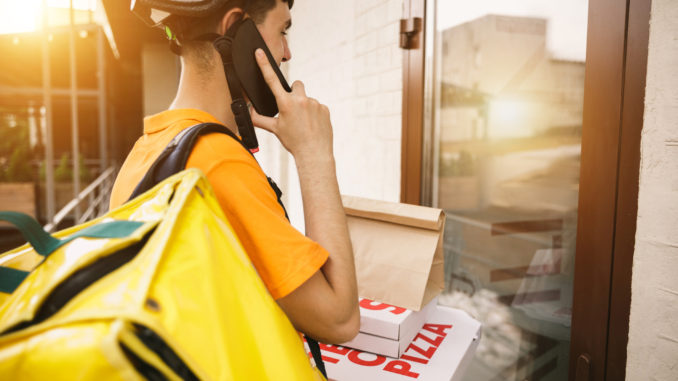
By Monica Eaton-Cardone, Co-founder and Chief Operating Office, Chargebacks911 - 7.18.2019
The general consensus in the food and beverage industry tends to be a little mixed regarding delivery services like Doordash, Grubhub and Uber Eats.
For some restaurants, partnering with one or several delivery services is a great way to attract new customers. For others, it’s a costly and losing venture. Benefits may vary, depending on the unique circumstances of one’s business. One thing that is true is that fraudsters find a way to take advantage of just about any new technology we might introduce to the market and delivery services are no exception to that rule.
Fraud is nothing new for food and beverage merchants. The pace of attacks and the tactics that fraudsters employ to carry them out are changing with technology, which is where the problem lies.
According to the 2019 Fraud Attack Index report from Forter, the food and beverage market suffered a 60 percent year-over-year increase in fraud attacks in 2017. As if that weren’t bad enough, we saw a 79 percent increase the following year, plus a 170 percent increase in cases of policy abuse.
Overall, orders placed via mobile channels will reach $38 billion annually by next year. At the same time, there’s a clear relationship between card-not-present transactions and fraud.
Multiple Avenues of Attack
Fraudsters use multiple different tactics to separate businesses from their money.
Account takeover (or ATO) is one of the fastest-growing criminal tactics on the market. ATO incidents are becoming all too common because of the prevalence of loyalty programs and customer accounts. It’s very difficult to detect, which is why it will cost merchants over $2.3 billion this year—a 300 percent increase compared to 2017—according to Javelin Strategy & Research.
There’s also friendly fraud to consider. This is less about fraudsters setting out with intent to steal, but rather consumers who simply don’t understand the consequences of their actions. They end up filing disputes for legitimate transactions, costing restaurants revenue, merchandise and fees.
The 170 percent increase in policy abuse instances? That is directly tied to friendly fraud. Then there’s card testing, gift card fraud…too many different threat sources to accurately touch on. The point is that, while none of these tactics are unique to the restaurant industry, there are unique challenges confronting food and beverage merchants with each.
Fraudsters often use food delivery orders to test the validity of stolen credit card details purchased on the dark web. Plus, online food delivery businesses are under constant pressure to deliver high levels of service with speed and accuracy, making them especially vulnerable to bad actors or unintentional missteps. Restaurants, for their part, often operate under very tight margins (typically 3-5 percent). Add in the appeal of food and beverage as a target, and it’s no surprise that we’re seeing such a problem.
Tech Takes on Fraud Attacks
New technologies create uncertainty in the market. As it tends to go, fraudsters usually find ways to manipulate new technology to carry out attacks before merchants and solution providers identify ways to prevent them.
It’s not all bad, though. While technology creates opportunities for fraudsters, it also creates ways to counter and prevent fraud. Some of the most essential tools in the fight against fraud in the food and beverage industry include:
- Predictive Analytics: Credit card companies and banks can implement predictive analytics into their existing fraud detection workflows. By carrying out meta-analysis of fraud attacks, merchants can develop a profile of typical fraud indicators and developing threat sources.
- Fraud Scoring: Merchants need an efficient fraud detection system in place to stop bad transactions from going through. By examining a variety of indicators (geolocation, address verification, CVV verification, etc.), merchants can pinpoint and reject likely fraud attacks.
- Artificial Intelligence: AI software could be used to analyze and score credit card transactions in the same way banking transactions are analyzed. AI tools can allow for more dynamic, intelligent decisioning in both identifying and predicting fraud attacks.
Technology is important, but so are merchant tactics. Many merchants are afraid of losing sales if they make ordering more difficult, so they don’t apply due diligence or weight to their antifraud technologies. This speaks to a need to balance what we call “positive” and “negative” friction.
Positive friction is mostly behind-the-scenes. It constitutes all the verification methods and tools that have either no direct impact on the customer experience, or which setup reasonable blocks in the process. For example, requiring complex and unique passwords for account creation is positive friction, as is asking buyers to verify an order before finalizing their purchase.
In contrast, negative friction includes all the errors and unnecessary steps that slow down the process with no purpose or benefit. Broken in-app navigation or excessive, redundant information fields are negative friction.
We need to implement tools and strategies to mitigate fraud, while always keeping an eye to balance friction.
Fraud in the food and beverage industry isn’t going away. But with the right tools and strategies in place, both operators and delivery services can minimize its impact.

Monica Eaton-Cardone is co-founder and chief operating officer of Chargebacks911, a global dispute mitigation and loss prevention company.
Are you an industry thought leader with a point of view on restaurant technology that you would like to share with our readers? If so, we invite you to review our editorial guidelines and submit your article for publishing consideration.

